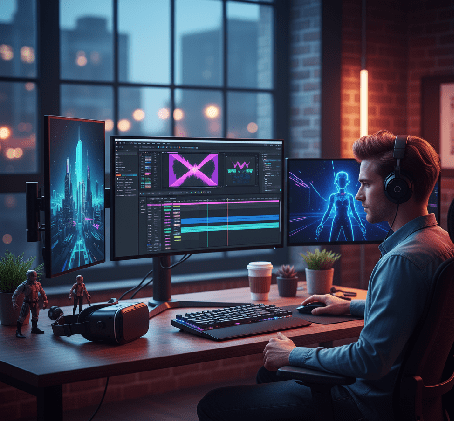Technology’s Influence on Modern Visual Storytelling Techniques
The evolution of visual narratives has accelerated dramatically as digital tools become increasingly accessible to creators at every skill level worldwide. A personal gift with a name (persoonlijk cadeau met naam) engraved on a photo frame or album represents how we’ve always cherished visual memories and storytelling through images. These customized items capture the human desire to preserve and share meaningful moments with others in tangible, lasting ways.
Personalized frames with names and dates transform ordinary photographs into heirlooms that carry emotional weight across generations within families. The tradition of giving such thoughtful presents demonstrates our deep-rooted connection to visual narratives and memory preservation throughout history. However, beyond these personal tokens, technology has fundamentally altered how we create, consume, and understand visual stories in contemporary society.
Digital Revolution in Visual Content Creation

Technology has democratized visual storytelling by making professional-grade tools available to anyone with a smartphone or basic computer setup. High-resolution cameras now fit in pockets, allowing spontaneous capture of moments that would have required expensive equipment decades ago. Editing software that once cost thousands of dollars is now available as free applications accessible to aspiring creators everywhere.
A level of accessibility that has unleashed a creative revolution where millions of voices can share their unique perspectives through visual media.
How Social Platforms Shape Narrative Structure?
Visual storytelling on social media platforms has evolved its own distinct grammar and conventions that differ dramatically from traditional formats. Stories unfold in vertical formats optimized for mobile viewing, fundamentally changing composition and framing techniques used by creators.
The ephemeral nature of some platform features encourages authentic, unpolished content that feels more genuine and relatable to audiences. Algorithm-driven content discovery means visual narratives must capture attention within seconds, leading to more dynamic and immediately engaging opening sequences.
Interactive Visual Experiences
Modern audiences no longer passively consume visual content but actively participate in shaping narratives through interactive elements and choices. Virtual reality experiences immerse viewers directly into story worlds, creating unprecedented levels of engagement and emotional connection with narratives.
Augmented reality layers digital information onto physical environments, blending real and virtual elements to create hybrid storytelling experiences.
Animation and Motion Graphics in Contemporary Storytelling
Digital animation tools have made movement and transformation core elements of modern visual narratives across all content types and platforms. Motion graphics explain complex concepts through visual metaphors that static images cannot convey as effectively or memorably to diverse audiences.
Animated elements add energy and dynamism to otherwise static presentations, holding viewer attention in an increasingly competitive content landscape. The accessibility of animation software means individual creators can produce sophisticated motion graphics without requiring large production teams or budgets.
Real-Time Rendering Technology
Game engines and real-time rendering systems have blurred the lines between video games, film, and interactive experiences in revolutionary ways. Creators can now produce cinematic-quality visuals that respond instantly to user input, enabling truly responsive storytelling that adapts to individual viewers.
Virtual production techniques allow filmmakers to visualize and adjust entire scenes in real-time during shooting, dramatically streamlining the creative process. These technological advances continue pushing boundaries of what’s possible in visual narrative construction, creating exciting opportunities for storytellers willing to embrace new tools and experimental approaches to their craft and audience engagement strategies.



